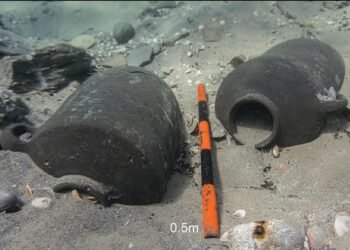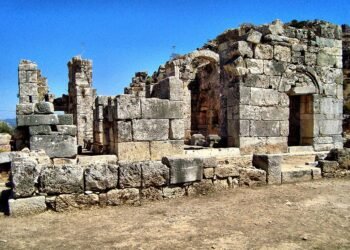Archaeologists have unearthed a vast Viking Age burial ground near Varberg in Halland County, Sweden, during what began as an investigation of a Stone Age settlement.

Initially, the team was conducting a routine preliminary examination for the installation of new water pipes and a roundabout. However, the excavation, which started in May 2017, took a surprising turn when the remains of 139 Viking graves were discovered, containing human and animal bones, ship settings, cremation sites, and various artifacts.
Despite only six percent of the site being excavated, significant findings have been made. The burial ground, located on a ridge near two ancient trade routes, has likely been damaged by centuries of farming, where land was leveled and plowed. This has destroyed the surface structures of many graves.
“We’ve had to interpret everything from below because the graves were so disturbed,” explained Petra Nordin, project leader from Arkeologerna, a division of the Swedish National Historical Museums. Nevertheless, researchers were able to identify cremation sites, ship burials, and animal remains.

One of the most striking discoveries was the evidence of three large ship burials, including the imprint of a 50-meter-long vessel, and a ship-shaped mound. These findings suggest that the site was of considerable significance during the Viking Age. Nordin noted that they often found dogs buried alongside humans in cremation pits. “The dog was a companion and followed the human onto the pyre,” she added.
The graves varied in size and content, with some containing animal bones from birds, dogs, cattle, and pigs, likely as funerary offerings. Researchers also uncovered cremation layers, where bodies had been burned before animals were placed on top of the ashes as sacrifices. According to Nordin, “After the dead were burned, unburnt animals, often cattle, were placed on top, likely as food offerings.”
In addition to human and animal remains, the archaeologists found various artifacts, including jewelry such as fibulae and clasp buckles, ceramics, and a fragment of an Arabic silver coin dating from CE 795–806. This coin, heavily affected by fire, aligns with the period of the oldest graves at the site. The presence of these items, along with weaving weights and iron arrowheads, adds to the mystery of the settlement that must have existed nearby.
The burial ground’s strategic location on a flat ridge between the Tvååkersån River and an ancient road known as Järnbärarvägen suggests that this area played a crucial role in Viking Age trade and transport. However, the exact location of the settlement associated with these burials remains unknown. There are theories of a nearby Viking trading post, possibly at Gamla Köpstad or Galtabäck harbor, but this is yet to be confirmed.
The team had to rely heavily on metal detectors and careful analysis to decipher disturbed graves. Sometimes, only faint traces remained to indicate where cremation pyres or stones once stood.
Nordin expressed hope that future excavations will shed more light on the Viking Age community that once thrived in the region.























